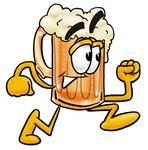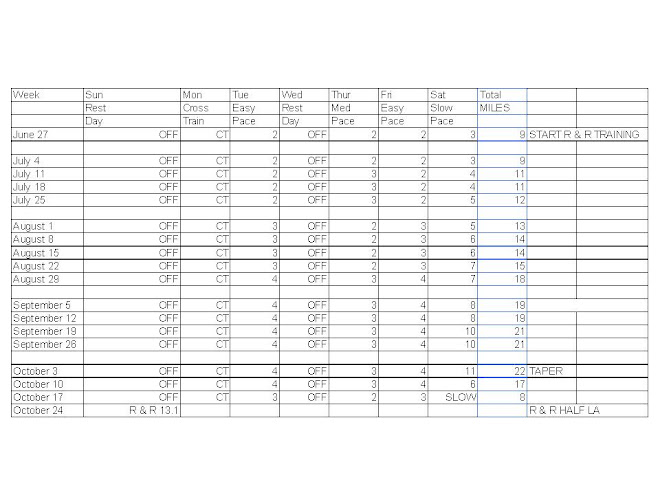Rene found the following story on the NPR iPhone
 by Christopher Joyce- July 19, 2010
by Christopher Joyce- July 19, 2010
Imagine for a moment how our earliest ancestors felt when they came down from the trees and stood on two legs. "Hey, now we can carry stuff!" they might have thought. They paid a price, though: On the ground it was a tiger-eat-monkey world, and two legs were slower than four.But one prominent biologist, Harvard anthropology professor Dan Lieberman, says not so fast. Humans invented something better than speed: endurance running. It allowed us to hunt faster animals, and that changed the course of evolution. "How long a run do you think you can ..." Lieberman's voice trails off as he examines my "running form." We're standing next to the Charles River as other joggers pass by in the drizzle. "That's about a mile and a half," he offers, pointing down toward a distant bridge. Lieberman looks like a human greyhound, and he's already run three miles this morning. Lieberman studies running and how it makes humans unique. Even when he's running a marathon, he's thinking about how the body does it. "Sometimes I do kind of bizarre things when I'm running," he says as we start off at a leisurely trot. "You know, move my arms in funny ways just to think about it, and I get these strange looks and realize I probably should not be doing this in public." Designed For Endurance, Not SpeedToday, it's his footwear that draws attention. They're like gloves -- skintight, no heels, no support. Lieberman studies barefoot runners and finds that they naturally land on the balls of their feet -- it's just too painful to land on the heel. And planting your foot on the ball transfers and stores elastic energy in the foot ligaments and Achilles tendon."And then they act like rubber bands, they're springs," he says. "They recoil; they push you back up into the air as you start to take your jump." Lieberman says this is what makes barefoot running -- the way our ancestors ran -- more efficient than running with shoes. But even if early humans ran more efficiently, they still couldn't run as fast as a four-legged meal. So, Lieberman says, they evolved into marathon machines. "Most animals are designed for speed, for power, not for endurance," Lieberman explains, as we make a turn onto the bridge. "And we are a special species in having been selected for endurance, not speed." So we grew longer legs and lighter feet; the joints in the legs and pelvis got bigger to absorb a lot of impact; and we grew a bigger butt muscle. Lieberman says these and other changes allowed us to run down and exhaust prey, like antelopes. He notes that "persistence hunters" in Africa have been known to do that. And the payoff would've been big for early humans: lots of high-calorie meat to feed a bigger brain. At this point, my brain is oxygen-starved, so we stop. Lieberman says I lack meat motivation. "In fact, I tell people, you know, when you're in the marathon and you're wondering at mile 16 or 17 what on earth you're doing, remember, you're chasing a kudu [an African antelope], that's what you're doing, you're re-enacting that chase from a million years ago." "Does it work?" I ask. "Oh, absolutely," he laughs. Modeling How We RunLieberman has taken his research into running into Harvard's 19th-century Peabody Museum. He's got a graduate student running on a treadmill with electrodes stuck on his body to record muscle contractions, and a dog collar around his forehead with accelerometers to measure head movements. Lieberman is creating a computer model of how we run. He thinks it will tell him how the earliest humans evolved to run. He believes running made us what we are. To prove it, he sometimes asks his volunteer runners to do some strange things. "There are no humans out there with faces as large as Neanderthals," he explains as he rummages through a cupboard, "so people wear weights in their mouths, which then changes the center of gravity of their head." Understanding head control is important. If you don't keep your head still, you can't focus your eyes. Lieberman says modern humans, unlike apes, have a special muscle that connects each arm to the neck and head. As you swing your arms, they become counterweights to stabilize your head. Born To Run?Clearly, we're runners. And millions of years ago, we started putting more meat on our menus. That's clear from cut marks on animal bones, and our unique digestive system and our bigger brain. Did endurance running make that happen? Lieberman thinks yes, though the proof is tough to tease out. "When you find bones, none of them come with labels on them telling you how they ran or how they walked, or why we are the way we are," he says. "But they pose questions about what were the transitions in human evolution, why did those anatomical features change?" Some scientists say just because modern African hunters run down prey doesn't prove our ancestors did. There's no hard evidence of it. Maybe it was better hunting tools that got us more meat. Maybe what Lieberman sees as the body's "running" adaptations were just for better walking. And some suspect that Lieberman's passion for running colors his conclusions. He says no: "I'm an evolutionary biologist first and a runner second, absolutely. I do love running, but it's not the only thing I love."Lieberman is passionate about exercise. He says it's fundamental to being human; it's essential to the way our bodies function and keeping them healthy. And he says running is the purest form of exercise. "Adding information about how we evolved to exercise and how exercise is actually woven into our body's natural selection, in a special way, I think, adds extra relevance," he says. Especially, he says, as our modern life style threatens to make human exercise obsolete. [Copyright 2010 National Public Radio]



 by Christopher Joyce- July 19, 2010
by Christopher Joyce- July 19, 2010






